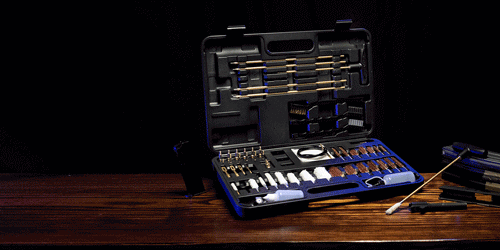Foreword
In the world of tactical operations, visibility and stealth can make all the difference. Near-Infrared (NIR) compliance is a critical feature for military and tactical gear, ensuring that equipment blends seamlessly with natural surroundings when viewed through night vision devices. But what materials are NIR-compliant, and why does it matter? Let’s explore the essentials.

What Does NIR Compliance Mean?
NIR compliance refers to the ability of materials to reflect light in the near-infrared spectrum in a way that mimics natural surroundings. This property reduces the likelihood of detection by infrared cameras or night vision equipment.
To achieve NIR compliance, materials must absorb and reflect light similarly to the natural environment, particularly in tactical scenarios where blending with foliage or terrain is crucial.
The Specifications Behind NIR Compliance
NIR compliance isn’t just a concept—it’s tied to specific standards that set measurable requirements. Take MIL-DTL-32439B (2020) as an example. This specification is used by the US military for woven nylon fabrics in various weights such as 330, 500, 725, and 1000 denier—materials commonly referred to as Cordura.
For instance, the M81 camouflage pattern specifies measurements at wavelengths ranging from 600 to 860 nanometers, even though the infrared spectrum itself spans from ~700 nanometers to 1 millimeter. Meeting these specifications is essential for ensuring that tactical gear remains undetectable under night vision equipment.

How Is NIR Compliance Verified?
To verify whether a fabric meets the standards set by MIL-DTL-32439B, it must undergo precise testing. This involves measuring the fabric with a spectrometer capable of performing infrared spectroscopy.
By analyzing the results, manufacturers can determine if the material reflects and absorbs infrared light within the levels required for compliance. Only after these measurements can a material be confidently labeled as NIR-compliant.
Materials Commonly Used for NIR-Compliant Gear
1. Polyester and Nylon Blends
These synthetic fibers are widely used in tactical gear due to their durability and flexibility. To be NIR-compliant, these materials undergo special treatments or are manufactured with dyes that absorb infrared light effectively.
Application: Tactical vests, uniforms, backpacks.
Advantages: Lightweight, strong, and resistant to wear and tear.
2. Cotton-Based Fabrics
Natural fibers like cotton are inherently good at absorbing NIR light, making them an excellent base for NIR-compliant textiles. However, blending cotton with other fibers can enhance durability without compromising its NIR properties.
Application: Camouflage uniforms and tactical apparel.
Advantages: Breathable and comfortable for extended wear.
3. Infrared Absorbent Coatings and Dyes
Beyond the base material, the coatings and dyes used in manufacturing play a vital role in achieving NIR compliance. These specially formulated finishes allow synthetic and natural fabrics to reflect infrared light in a non-detectable way.
Application: Helmets, outerwear, and accessories.
Advantages: Versatility across a range of materials.
4. Kevlar and Other High-Performance Fibers
Kevlar and similar materials, often used in body armor and tactical vests, can be made NIR-compliant through advanced chemical treatments. These fibers provide both protection and stealth.
Application: Ballistic plates, tactical vests.
Advantages: Extreme strength and protective capabilities.
Importance of Proper Testing
For a material to be certified as NIR-compliant, it must undergo rigorous testing under controlled conditions. Testing ensures that the material performs effectively in diverse environments, from dense forests to open deserts, under night vision surveillance.
Why Choose NIR-Compliant Materials?
1.Operational Stealth
NIR-compliant gear minimizes detection, providing a tactical advantage in the field.
2.Enhanced Safety
Staying undetected reduces the risk of exposure, making NIR-compliance essential for military and law enforcement personnel.
3.Regulatory Requirements
Many organizations mandate NIR-compliant gear for specific missions, ensuring standardized performance.

NIR Compliance in Gloryfire Tactical Vests
At Gloryfire, we understand the importance of NIR compliance in tactical operations. Our tactical vests are designed using NIR-compliant materials, ensuring you remain undetectable during night missions. With advanced fabrics and coatings, our vests combine stealth with durability, making them the perfect choice for professionals in the field.
Conclusion
NIR compliance is more than a feature; it’s a necessity for tactical gear in modern operations. By choosing materials like polyester blends, cotton-based fabrics, and specially treated Kevlar, you can ensure optimal performance in high-stakes environments. If stealth and reliability are your priorities, invest in NIR-compliant gear to stay ahead of the curve.
Explore our NIR-compliant products at Gloryfire today!






